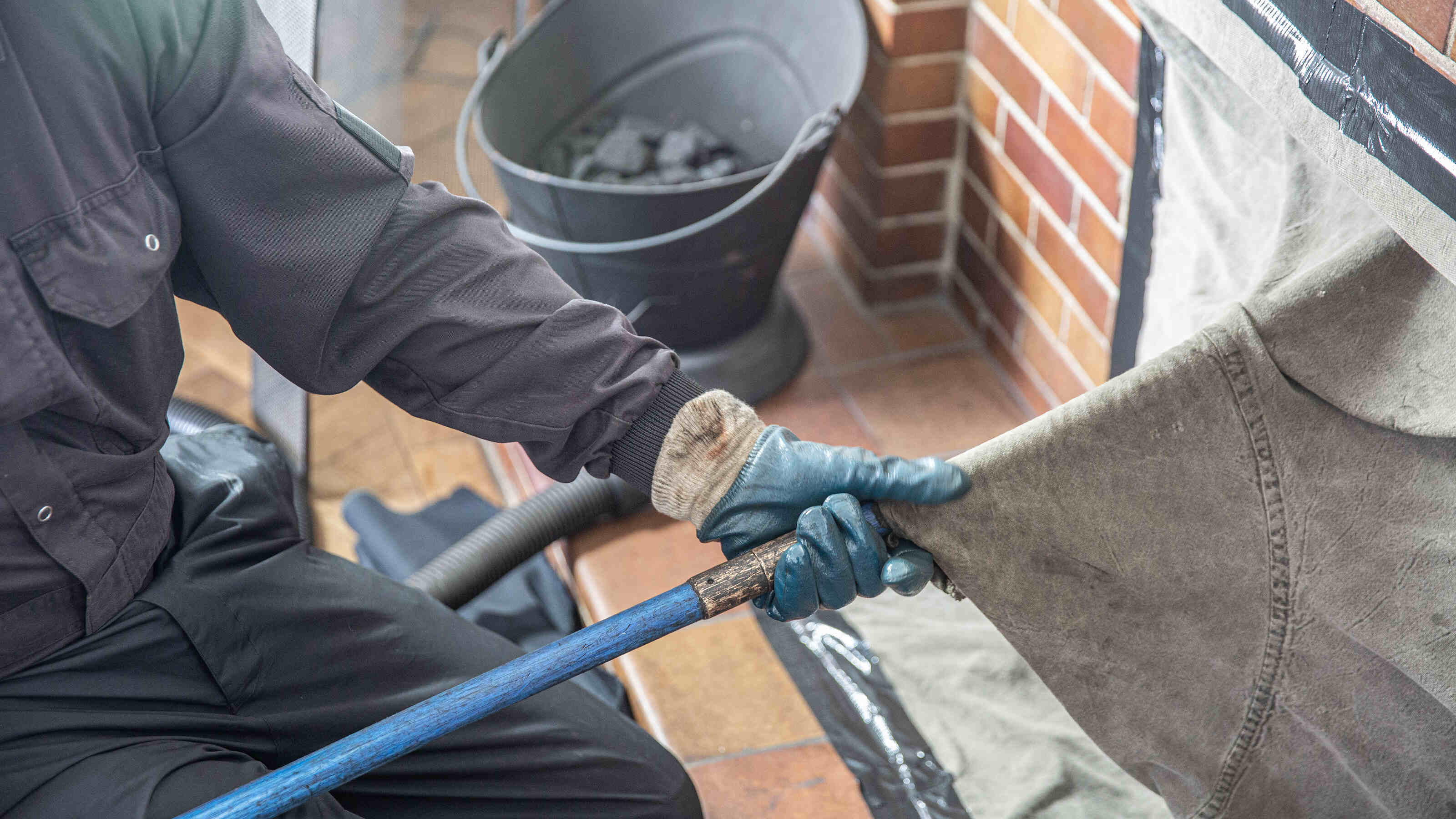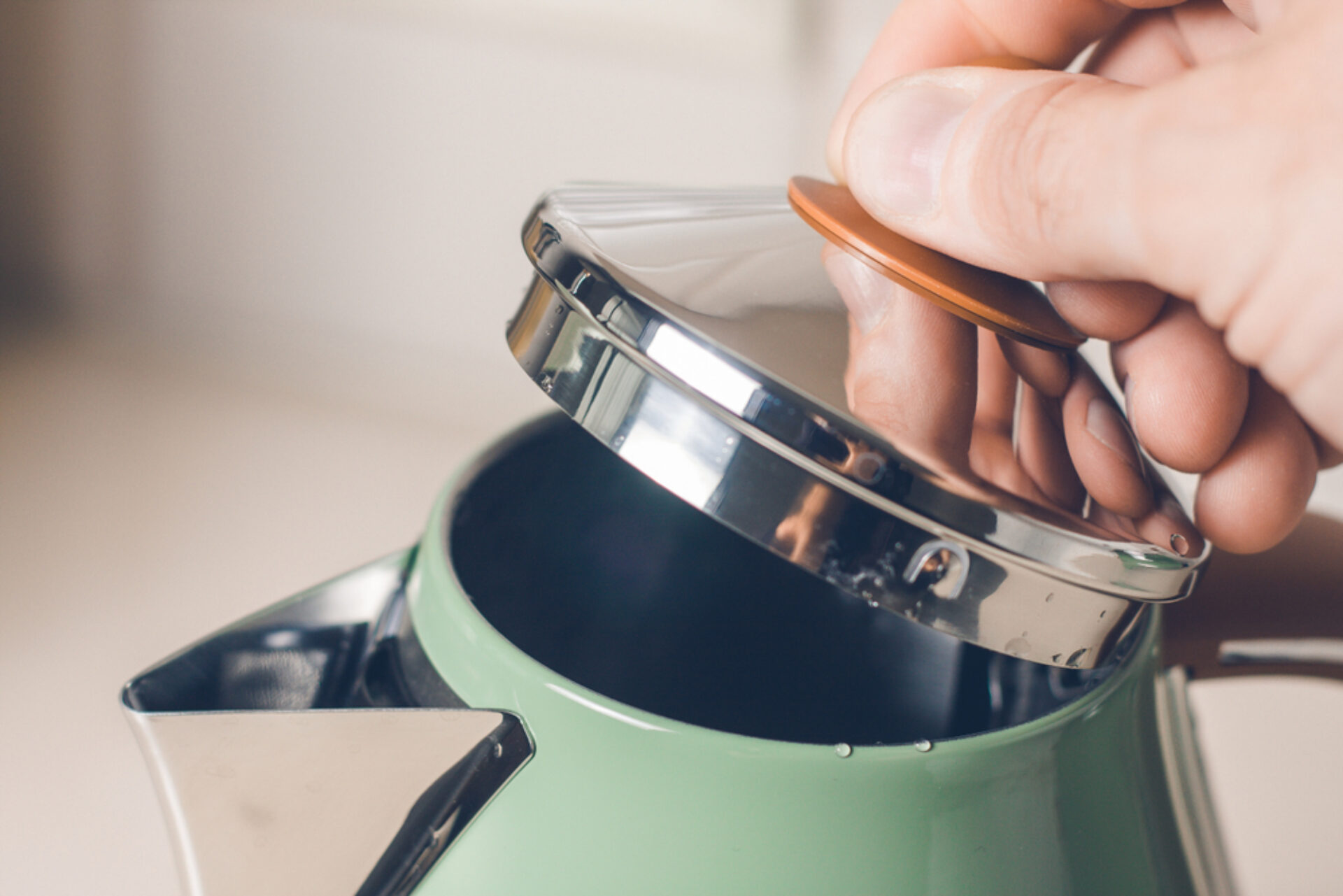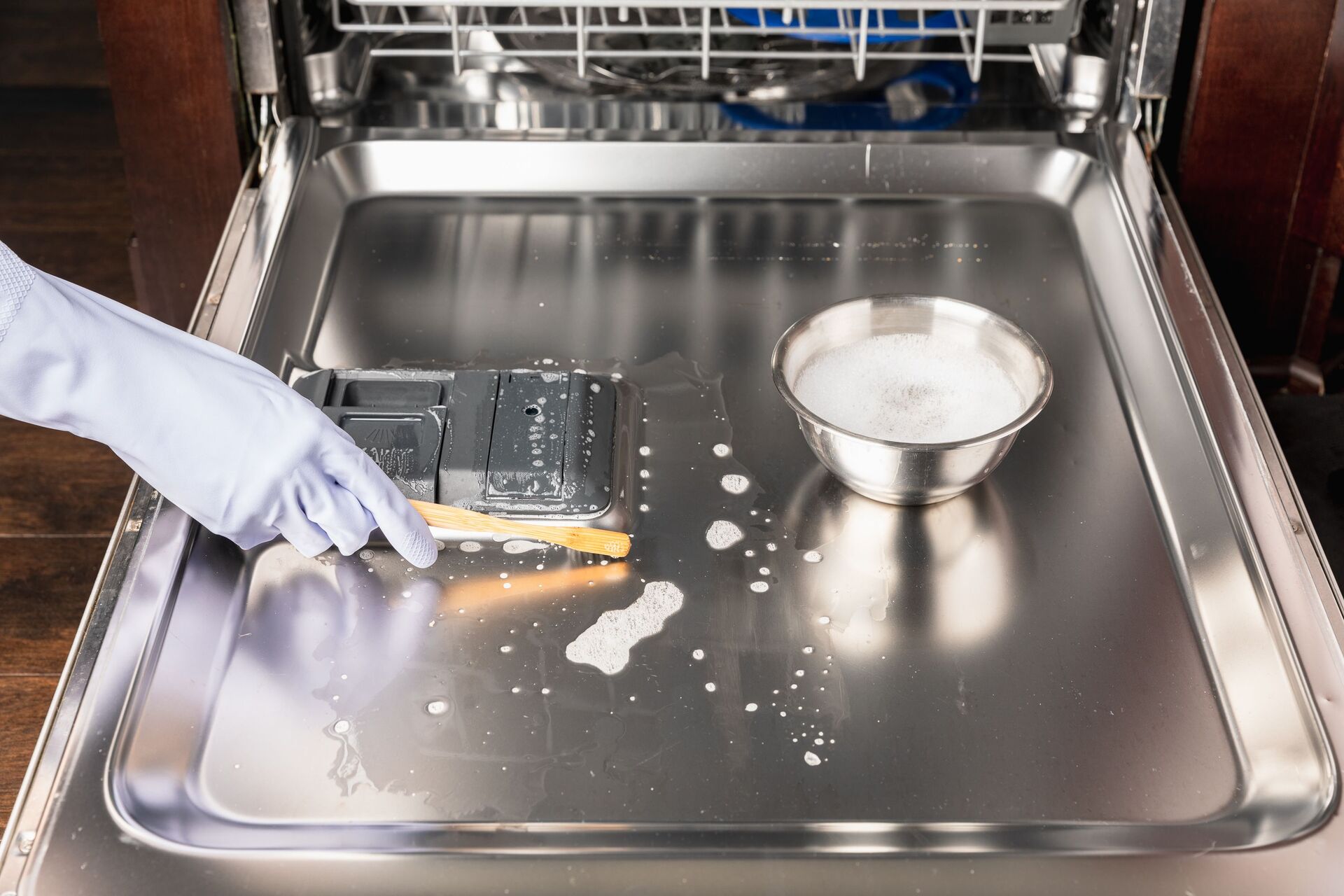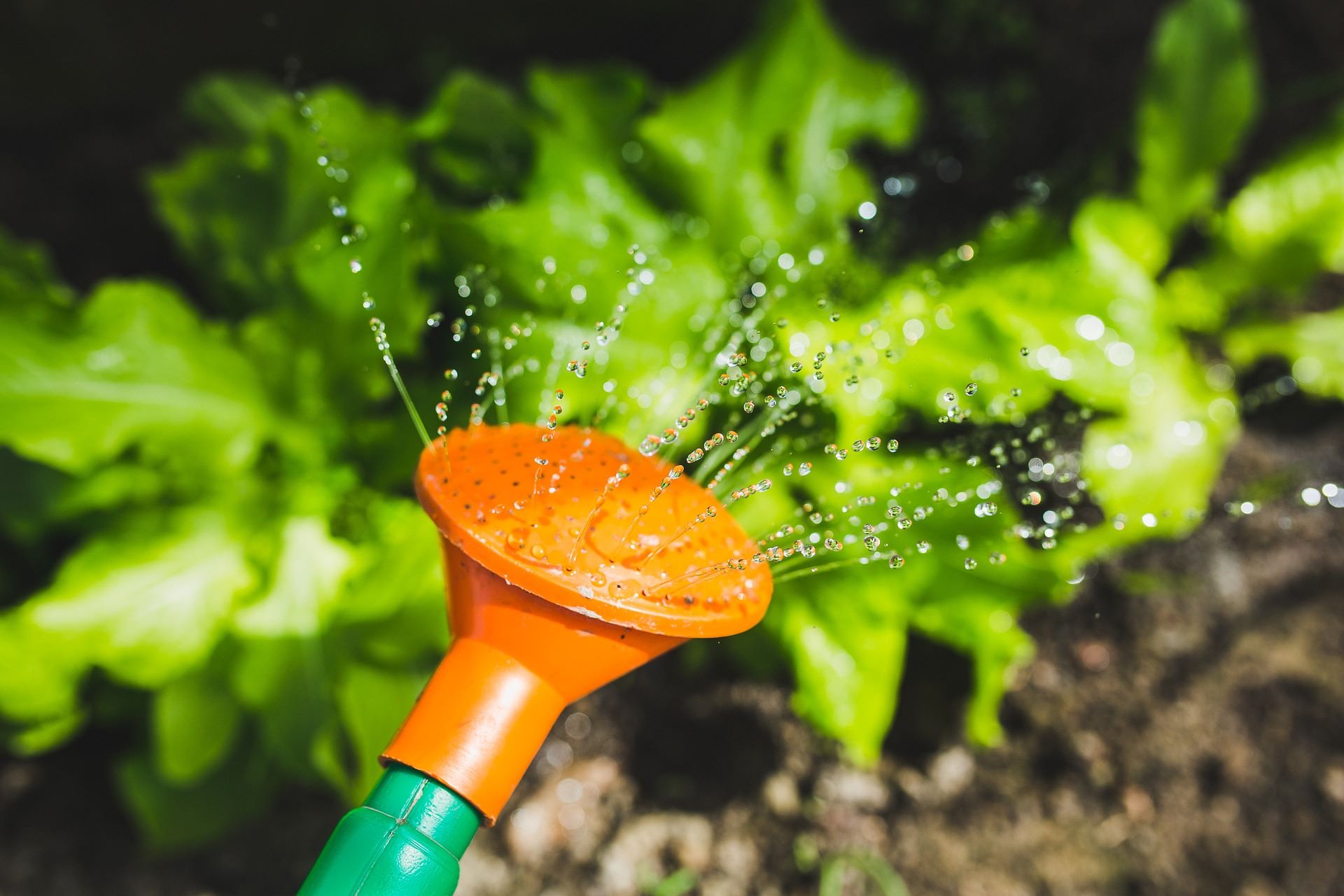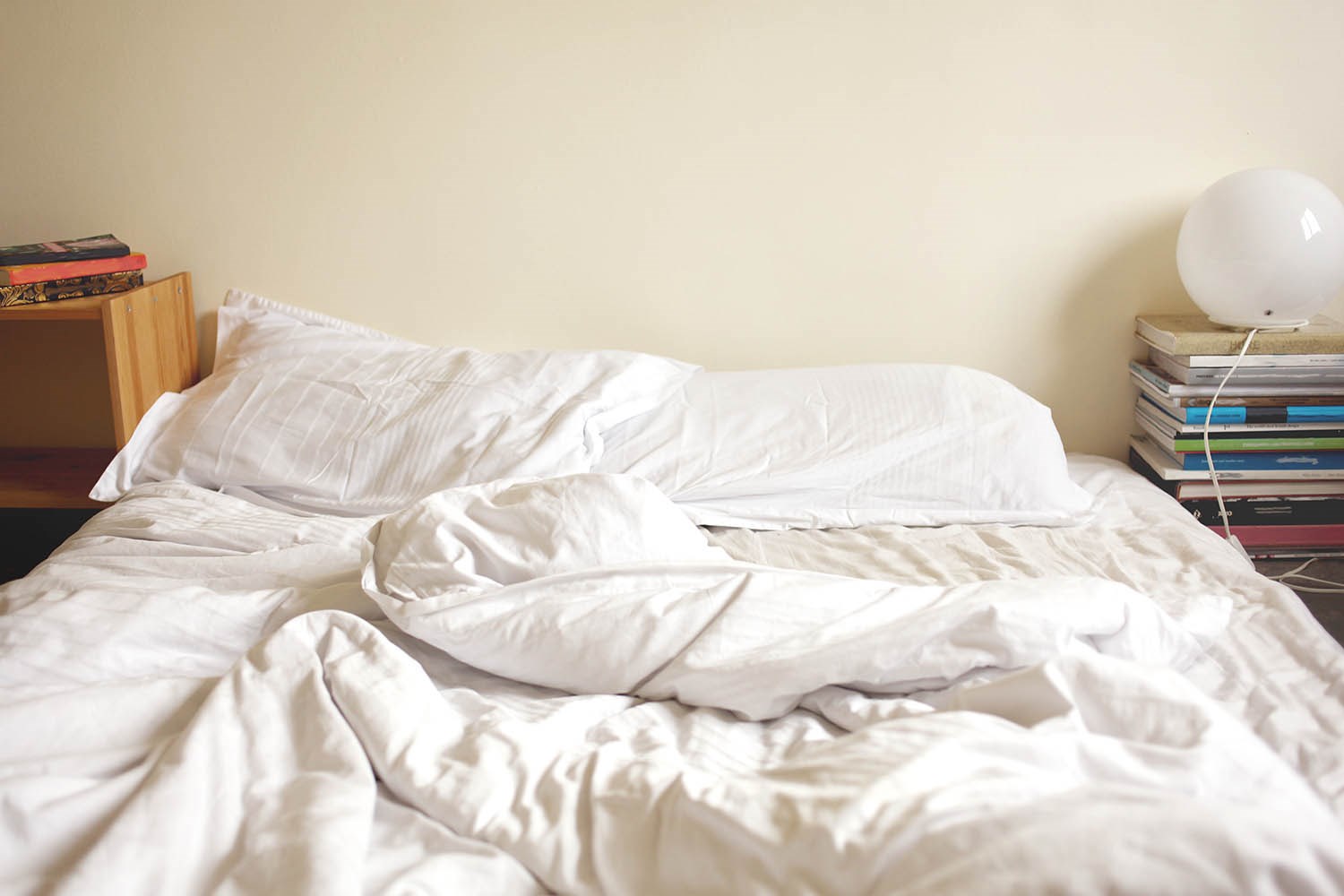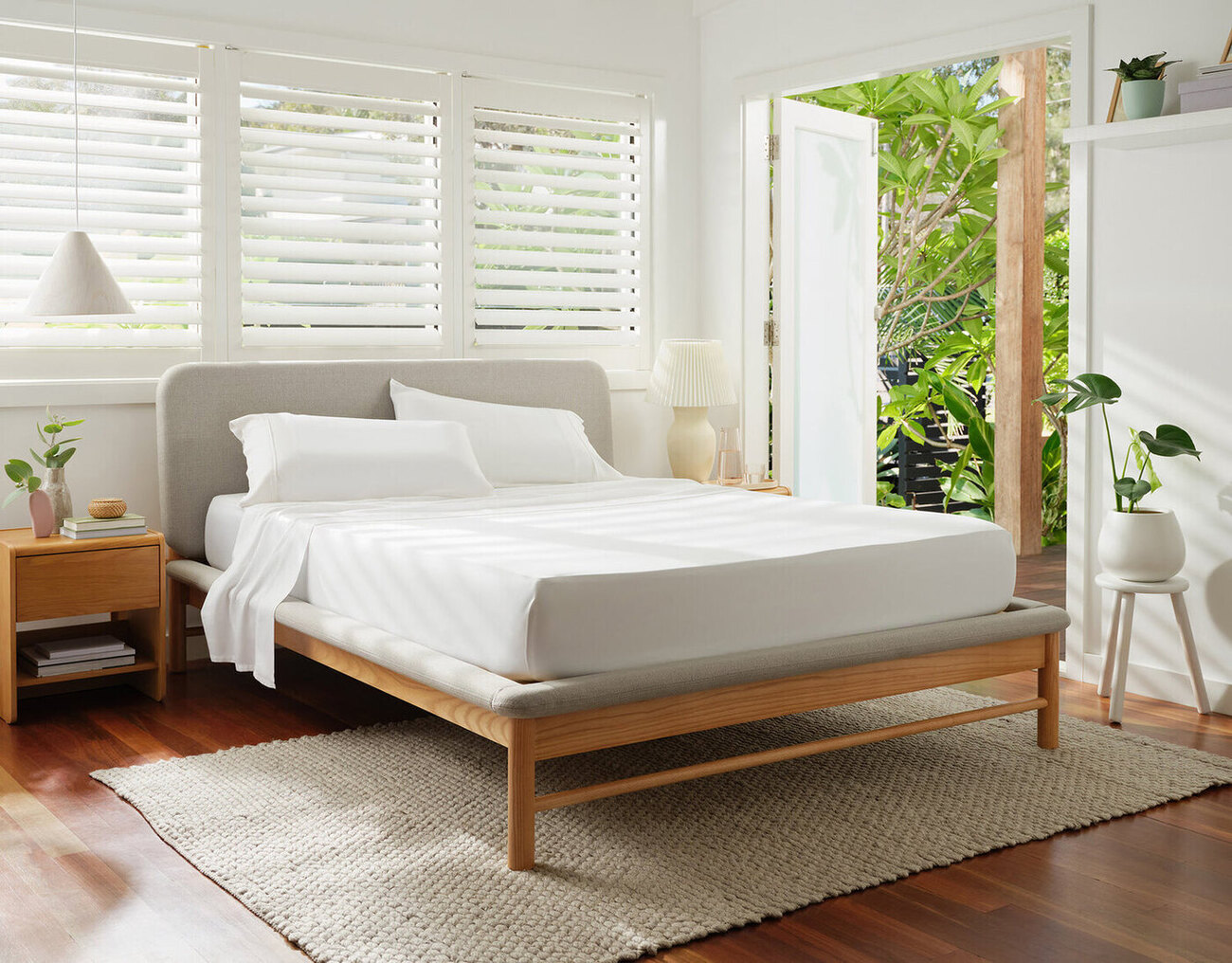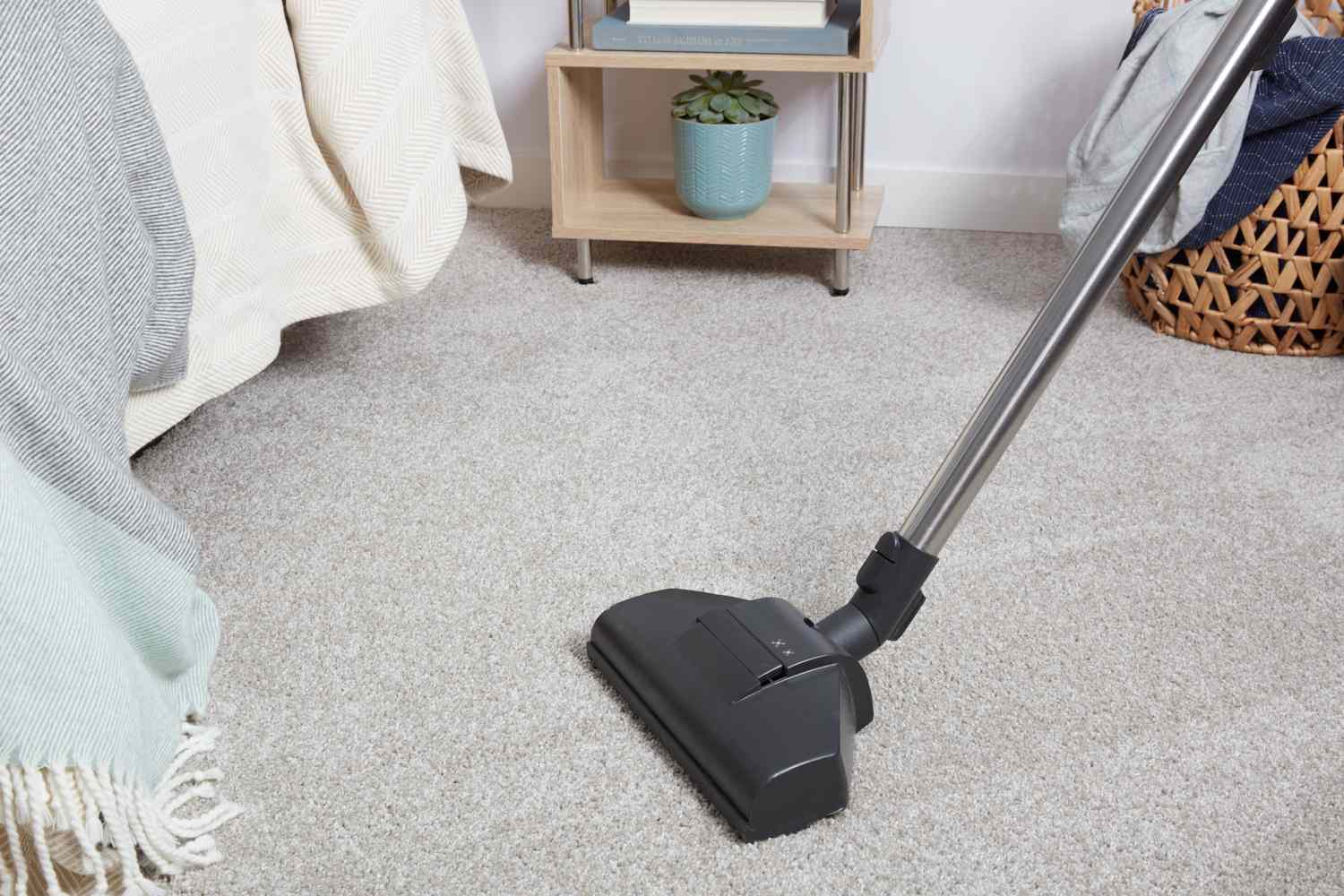

Articles
How Often Should You Vacuum A Carpet
Modified: January 6, 2024
Discover the best frequency for vacuuming your carpet with our informative articles. Learn how often you should vacuum to keep your carpet clean and fresh.
(Many of the links in this article redirect to a specific reviewed product. Your purchase of these products through affiliate links helps to generate commission for Storables.com, at no extra cost. Learn more)
Introduction
Vacuuming is an essential task to keep your carpets clean, fresh, and free from dust and allergens. It not only improves the appearance of your carpets but also helps to maintain their longevity. But how often should you vacuum your carpet?
In this article, we will explore the importance of regular vacuuming and discuss the factors that determine the frequency of vacuuming. We will also provide recommendations for different situations to help you keep your carpets in optimal condition.
Let’s dive deeper into this often overlooked, yet crucial, aspect of carpet care.
Key Takeaways:
- Regular vacuuming is crucial for maintaining clean, healthy carpets. Factors like carpet type, foot traffic, pets, and allergies determine the frequency. Stay proactive to keep your home environment fresh and inviting.
- Different situations call for varying vacuuming frequencies. Busy households, pet owners, and allergy sufferers may need more frequent vacuuming. Pay attention to signs that your carpet needs attention and adjust your routine accordingly.
Read more: How Often Should Carpet Be Vacuumed
Importance of Regular Vacuuming
Regular vacuuming is essential to maintain a clean and healthy environment in your home. Here are some key reasons why regular vacuuming should be a part of your cleaning routine:
- Removal of Dust and Allergens: Carpets act as a collection point for dust, dirt, pet dander, and other allergens. Regular vacuuming helps to remove these particles from the carpet fibers, preventing them from becoming airborne and causing respiratory problems.
- Improved Indoor Air Quality: Vacuuming not only removes visible dirt but also captures microscopic particles that affect the air quality in your home. By eliminating these irritants, you create a healthier environment for yourself and your family.
- Prevention of Carpet Damage: Dirt and debris that accumulate on the carpet can wear down the fibers over time, leading to premature aging and deterioration. Regular vacuuming helps to prevent this damage, extending the lifespan of your carpet.
- Enhanced Appearance: Vacuuming regularly keeps your carpets looking fresh and vibrant. It removes surface dirt and restores the carpet’s color and texture, resulting in a more appealing and visually pleasing space.
- Lessens the Need for Deep Cleaning: Deep cleaning your carpets can be time-consuming and costly. By vacuuming regularly, you reduce the build-up of dirt and grime, minimizing the frequency of deep cleaning required.
By understanding the importance of regular vacuuming, you can ensure that your carpets stay clean and in excellent condition for years to come.
Factors that Determine Frequency of Vacuuming
The frequency at which you should vacuum your carpet depends on several factors. Here are some key considerations:
- Type and Thickness of Carpet: Different types of carpets require different levels of maintenance. For example, high-pile or shag carpets tend to trap more dirt and debris and may require more frequent vacuuming compared to low-pile carpets. Additionally, the thickness of the carpet can affect how dirt and allergens accumulate, influencing the frequency of vacuuming.
- Amount of Foot Traffic: The more foot traffic your carpet receives, the more frequently you should vacuum. Areas such as entryways, hallways, and living rooms tend to have higher foot traffic and may require daily or several times a week vacuuming. Less frequently used areas like guest rooms or offices may only need weekly vacuuming.
- Presence of Pets: If you have pets, especially those that shed fur, you will likely need to vacuum more frequently. Pet hair and dander can accumulate quickly, leading to odor and allergy issues. Vacuuming regularly helps to remove pet dander, hair, and any other debris they may bring from outside.
- Household Allergies or Respiratory Conditions: If anyone in your household has allergies or respiratory conditions, it’s crucial to vacuum more frequently. Regular vacuuming helps to minimize the presence of allergens and irritants in the carpet, improving air quality and reducing potential allergic reactions.
These factors are interrelated and can vary from household to household. It’s important to assess your specific situation and adjust the frequency of vacuuming accordingly. Keep in mind that it’s better to err on the side of more frequent vacuuming to maintain a clean and healthy environment.
Type and Thickness of Carpet
When it comes to determining the frequency of vacuuming, the type and thickness of your carpet play a significant role. Different types of carpets have different characteristics that affect the accumulation of dirt and debris. Here are some key factors to consider:
1. Carpet Type
There are various types of carpets available, including cut pile, loop pile, Saxony, Berber, and shag. Each type has its own texture and construction, which can impact how dirt and allergens settle into the fibers.
For example, shag carpets with their long, loose fibers tend to trap more dirt and debris, requiring more frequent vacuuming. On the other hand, Berber carpets with their dense, low-pile construction may hide dirt more effectively but still need regular maintenance.
Understanding the characteristics of your specific carpet type will help you determine the appropriate frequency of vacuuming.
Read more: How Often Should You Change Your Carpet
2. Carpet Thickness
The thickness of a carpet refers to the height of its fibers. Thicker carpets, such as plush or high-pile carpets, tend to collect more dirt and dust particles due to their longer fibers, which offer more hiding spots for debris.
On the other hand, low-pile or flat-weave carpets have shorter and denser fibers, making it easier for vacuum cleaners to reach and remove the accumulated dirt.
Thicker carpets generally require more frequent vacuuming to prevent the dirt from settling deep into the fibers and causing damage over time.
3. Manufacturer’s Recommendations
It’s important to check the manufacturer’s recommendations for your specific carpet type. They may provide guidelines on how often you should vacuum to maintain the carpet’s appearance and durability.
By following the manufacturer’s guidelines, you can ensure that you are properly caring for your carpet and extending its lifespan.
In general, it is recommended to vacuum high-pile or shag carpets at least twice a week, while low-pile carpets may be vacuumed once a week. However, it’s important to assess your own situation and adjust the frequency based on factors like foot traffic, presence of pets, and allergies.
Regular vacuuming, combined with professional carpet cleaning at least once a year, will help keep your carpets in optimal condition and prolong their lifespan.
Amount of Foot Traffic
The amount of foot traffic your carpet receives is a crucial factor in determining how often you should vacuum. Carpets in high-traffic areas tend to accumulate dirt, dust, and debris more quickly than those in less frequently used areas. Here are some considerations when it comes to foot traffic:
1. Entryways and Hallways:
Entryways and hallways are usually the busiest areas of a home, experiencing the most foot traffic. These areas are prone to accumulating dirt, dust, and outdoor debris brought in on shoes. Vacuuming these high-traffic areas daily or several times a week is recommended to prevent the buildup of dirt and maintain a clean appearance.
2. Living Areas:
Living rooms, family rooms, and dining areas also tend to have significant foot traffic, especially in households with children or pets. Vacuuming these areas at least once a week is generally sufficient to keep the carpets free from dirt, allergens, and food crumbs.
3. Bedrooms and Less-Frequently Used Areas:
Bedrooms, guest rooms, and other less frequently used areas may not require as frequent vacuuming. These areas can often be vacuumed on a weekly or bi-weekly basis, depending on personal preference and the level of cleanliness desired.
It’s important to assess the specific needs of each area in your home and adjust the frequency accordingly. If you notice an increase in dirt or debris accumulation, it may be a sign that the carpet in that area needs more frequent vacuuming.
4. Regular Maintenance:
In addition to regular vacuuming, it’s important to incorporate other maintenance practices in high-traffic areas. Using doormats or runners near entryways can help minimize the amount of dirt brought into the house. Additionally, regular spot cleaning and treating spills promptly can prevent stains and maintain the appearance of your carpets.
By considering the amount of foot traffic your carpets endure, you can establish a vacuuming schedule that keeps them clean, fresh, and free from dirt and debris.
Presence of Pets
If you have pets in your home, it’s important to consider their presence when determining how often you should vacuum your carpets. Pets can bring in dirt, hair, dander, and other debris, which can accumulate in your carpets over time. Here are some factors to consider:
Read more: How Often Should You Steam Clean Your Carpet
1. Pet Hair:
Pets, especially those that shed heavily, can leave behind a trail of hair on your carpets. This hair can become embedded in the carpet fibers and can be challenging to remove without regular vacuuming. Frequent vacuuming helps to eliminate pet hair and keep your carpets looking clean and fresh.
2. Pet Dander:
Pet dander consists of tiny skin flakes that can cause allergic reactions in some individuals. Regular vacuuming helps to remove pet dander from your carpets, reducing the risk of allergies and respiratory issues. It’s especially important to vacuum if anyone in your household has pet allergies or asthma.
3. Accidents and Stains:
Pets may have accidents or leave behind stains on your carpets. It’s essential to attend to these incidents promptly to prevent odor and permanent staining. Vacuuming the affected area after cleanup can help remove any residual particles and maintain the cleanliness of your carpets.
4. Odor Control:
Pets can contribute to the development of odors in your home, especially if their hair, dander, or accidents are left unaddressed. Regular vacuuming helps to eliminate trapped odors and keeps your carpets smelling fresh.
Considering these factors, it’s recommended to vacuum areas where your pets spend the most time at least 2-3 times a week. This frequency helps to minimize the accumulation of pet hair, dander, and any odors that may arise.
In addition to vacuuming, remember to groom your pets regularly to reduce shedding and invest in a quality vacuum cleaner that is designed to handle pet hair and dander effectively.
By incorporating regular vacuuming into your cleaning routine, you can maintain a clean and healthy environment for both you and your furry friends.
Household Allergies or Respiratory Conditions
If you or someone in your household suffers from allergies or respiratory conditions, it’s essential to consider these factors when determining the frequency of vacuuming your carpets. Regular vacuuming plays a crucial role in reducing allergens and maintaining a clean and healthy home environment. Here’s why:
1. Allergen Removal:
Carpets can harbor allergens such as dust mites, pollen, pet dander, and mold spores, which can trigger allergic reactions and worsen respiratory conditions. Regular vacuuming helps to remove these allergens from the carpet fibers, reducing their presence in the air and minimizing the risk of allergic reactions.
2. Dust Control:
Dust is a common allergen that can easily accumulate in carpets. Vacuuming on a regular basis helps to control dust levels, preventing it from becoming airborne and aggravating allergies or respiratory conditions. This is especially important for areas where dust tends to settle, such as corners, edges, and under furniture.
3. Air Quality Improvement:
Vacuuming not only removes visible dirt but also captures microscopic particles that can affect indoor air quality. By reducing the presence of allergens, dust, and other contaminants, you create a cleaner and healthier environment for those with allergies or respiratory conditions.
Read more: How Often Should You Declutter
4. Frequent Carpet Cleaning:
Regular carpet vacuuming is a proactive measure to keep allergens at bay, but it’s also important to deep clean your carpets periodically to remove ingrained dirt and allergens. Professional carpet cleaning, such as steam cleaning, can effectively eliminate deep-seated allergens and maintain a healthier carpeted environment.
Considering the impact of allergens on individuals with allergies or respiratory conditions, it is typically recommended to vacuum high-risk areas, such as bedrooms and living areas, at least 2-3 times a week. This frequency helps to minimize allergen buildup and maintain better indoor air quality.
Remember to use a vacuum cleaner with a HEPA filter to capture a higher percentage of allergens and consider wearing a mask while vacuuming if you are sensitive to dust. Additionally, regularly changing the vacuum bag or emptying the canister will ensure optimal performance and prevent allergen re-circulation.
By prioritizing regular vacuuming and deep cleaning, you can create a healthier home environment for individuals with allergies or respiratory conditions.
Signs that Your Carpet Needs Vacuuming
Regular vacuuming is important, but how do you know when your carpet needs to be vacuumed? Here are some signs that indicate it’s time to give your carpet some attention:
1. Visible Dirt and Debris:
If you can see dirt, dust, or other debris on the surface of your carpet, it’s a clear indication that vacuuming is necessary. Visible dirt particles not only make your carpet look unclean but can also lead to the abrasion of fibers and premature wear and tear.
2. Allergies Acting Up:
If you or anyone in your household starts experiencing increased allergy symptoms, such as sneezing, congestion, or itchy eyes, it may be a sign that allergens have accumulated in your carpet. Vacuuming can help remove these allergens and provide relief from allergy symptoms.
Read more: How Often Should I Replace Carpet
3. Dull or Flat appearance:
Over time, dirt and dust can weigh down the carpet fibers, causing them to lose their natural bounce and luster. If your carpet looks flat or dull, it’s a good indicator that it needs a thorough vacuuming to fluff up the fibers and restore its appearance.
4. Pet Odors or Stains:
If you have pets, especially those that have accidents or tend to leave behind odors, it’s important to vacuum regularly to address any lingering smells or stains. Vacuuming can help reduce pet dander, remove pet hair, and freshen up your carpet.
5. High Foot Traffic Areas:
Areas with heavy foot traffic, such as entryways, hallways, and living rooms, tend to accumulate dirt and debris more quickly. If these areas appear visibly dirtier or matted compared to other parts of your carpet, it’s a sign that they need more frequent vacuuming.
By being attentive to these signs, you can determine when your carpet is in need of a vacuuming session. However, it’s important to establish a regular vacuuming routine to prevent these signs from becoming noticeable in the first place.
Remember to vacuum the entire area thoroughly, not just the visibly dirty spots or high-traffic areas, to maintain a consistently clean and fresh carpet.
Recommendations for Different Situations
The frequency of vacuuming can vary depending on your specific situation. Here are some recommendations for different scenarios:
1. Normal Household with Minimal Foot Traffic:
If you live alone or with a small family in a relatively low-traffic home, vacuuming once a week should be sufficient to keep your carpets clean and well-maintained. Focus on high-traffic areas, such as entryways and living rooms, and give extra attention to pet areas if you have pets.
2. Busy Household with High Foot Traffic:
For households with children, pets, or a larger family, more frequent vacuuming is necessary. Aim to vacuum high-traffic areas, like entryways, hallways, and living rooms, at least 2-3 times a week. Other areas of the house can be vacuumed once a week to maintain cleanliness.
3. Allergies or Respiratory Conditions:
If you or someone in your household has allergies or respiratory conditions, a stricter vacuuming schedule is recommended. Vacuum high-risk areas, such as bedrooms and living areas, 2-3 times a week. Additionally, consider using a vacuum cleaner with a HEPA filter to effectively capture allergens and improve air quality.
4. Homes with Pets:
If you have pets, vacuuming frequency should increase to effectively manage pet hair and dander. Vacuum high-traffic areas and pet areas at least 2-3 times a week. Consider using a vacuum cleaner specifically designed for pet hair and regularly clean or change the vacuum filters to maintain optimal performance.
Read more: How Often Should You Replace Rugs
5. Events or Gatherings:
Before and after hosting events or gatherings in your home, it is recommended to give your carpets some extra attention. Vacuum thoroughly before the event to remove any dirt or debris, and vacuum again afterward to clean up any spills or tracked-in dirt.
Remember, these are general recommendations and can be adjusted based on your specific needs. Assess your household’s unique circumstances, including the type of carpet, foot traffic, pets, and allergies, to determine the ideal vacuuming frequency.
In addition to regular vacuuming, it’s important to schedule professional deep cleaning at least once a year to maintain the longevity and freshness of your carpets.
By following these recommendations, you can ensure that your carpets remain clean, fresh, and in excellent condition for years to come.
Conclusion
Vacuuming your carpets regularly is an essential aspect of maintaining a clean, healthy, and visually appealing home environment. By understanding the importance of regular vacuuming and considering factors such as carpet type, foot traffic, pets, and allergies, you can determine the appropriate frequency for vacuuming.
Regular vacuuming helps to remove dirt, dust, allergens, and pet hair from your carpets, improving indoor air quality, preventing damage, and extending the lifespan of your carpets. It also enhances the appearance of your carpets, making your home more welcoming and visually appealing.
Different situations call for different vacuuming frequencies. If you have a busy household with high foot traffic, or if anyone in your household suffers from allergies or respiratory conditions, more frequent vacuuming is recommended. Likewise, if you have pets, their presence may require more frequent vacuuming to manage pet hair and dander effectively.
It is crucial to pay attention to signs that your carpet needs vacuuming, such as visible dirt, allergies acting up, dull appearance, or pet odors. By addressing these signs promptly, you can maintain a clean and fresh carpet and prevent any worsening of allergies or respiratory conditions.
In addition to regular vacuuming, it is also important to incorporate other carpet maintenance practices such as spot cleaning, deep cleaning, and using doormats or runners in high-traffic areas.
By following these recommendations and establishing a regular vacuuming routine, you can ensure that your carpets remain in optimal condition and create a clean, healthy, and inviting space for you, your family, and your guests.
Remember, a clean carpet not only enhances the aesthetics of your home but also contributes to the overall well-being and comfort of everyone in it. So, grab your vacuum cleaner and start taking care of your carpets today!
Frequently Asked Questions about How Often Should You Vacuum A Carpet
Was this page helpful?
At Storables.com, we guarantee accurate and reliable information. Our content, validated by Expert Board Contributors, is crafted following stringent Editorial Policies. We're committed to providing you with well-researched, expert-backed insights for all your informational needs.
